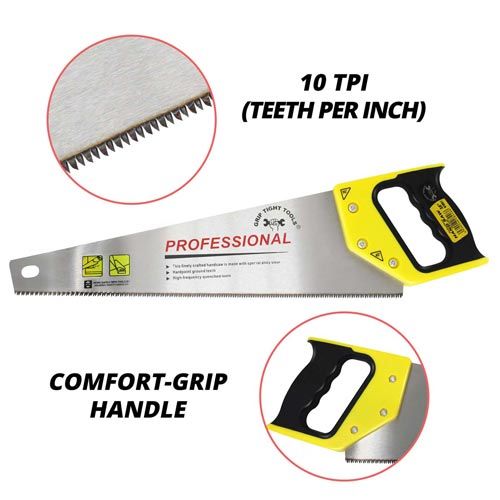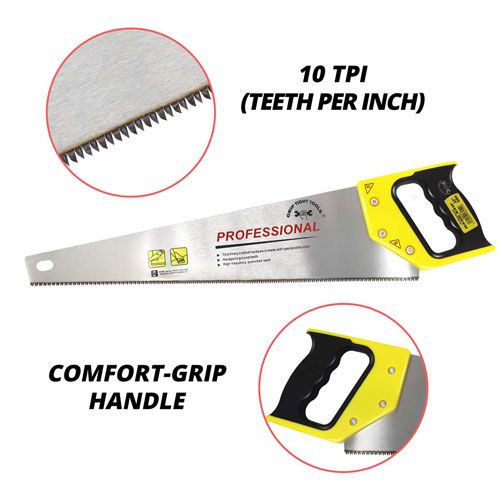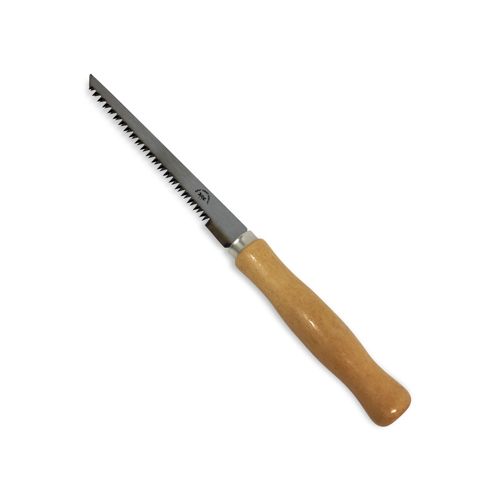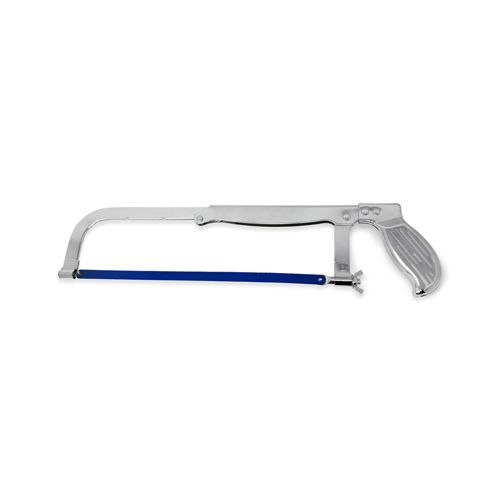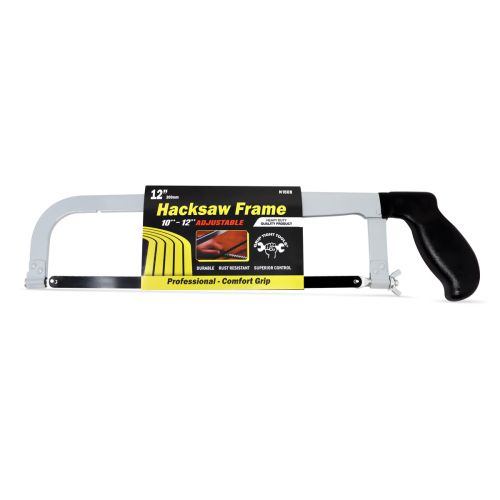FREE SHIPPING ON ORDERS $35+ (Excludes Bulky Items)
Hand Saws
HAND SAWS FAQ's
What are Hand Saws?
Hand saws are tools that are used to cut wood and other materials by hand. They have long or round blades with sharp teeth that are harder than the material being cut. Hand saws are also known as panel saws or wood saws.
What are the Types of Hand Saws?
- Crosscut saws: These have teeth that are angled across the blade and are used to cut across the grain of the wood.
- Rip saws: These have teeth that are parallel to the blade and are used to cut along the grain of the wood.
- Back saws: These have a stiff metal strip along the back of the blade and are used for precise cuts, such as dovetails and tenons.
- Coping saws: These have a thin blade that can be rotated and are used for cutting curves and shapes.
- Hacksaws: These have fine-toothed blades that can cut through metal and plastic.
- Bow saws: These have curved blades that are tensioned by a metal frame and are used for cutting branches and logs.
What are general safety tips when using Hand Saws?
- Always wear safety goggles to protect your eyes from injury. You may also need a dust mask if the material produces fine particles.
- Keep your hand well away from the blade when cutting. Do not test the sharpness of the blade with your hand or any other part of your body.
- Use a proper hand saw technique, which includes keeping your body in line with the blade, keeping your arms and hands close to your body, and using steady pressure on the saw blade.
- Use a tool of the right size and type for the material and the cut you want to make. Do not force the saw or use it for a purpose it is not designed for.
- Ensure that the material is kept firmly in place by using a vise, a clamp, or an assistant. Do not hold the material with your free hand unless you wear thick gloves and keep a safe distance from the blade.
- Start slowly and let the saw reach full speed before cutting. Do not look away from your work or get distracted by anything.
- Keep the hand saw clean and inspect it for damage before every use. Replace or repair any broken or dull blades.
- Store it in a safe place where children or unauthorized people cannot access it. Lower a table saw blade below the tabletop when finished.

